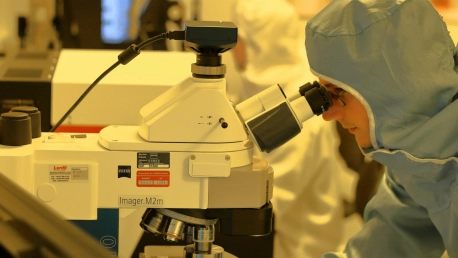The health care sector stands on the brink of a significant transformation with the rise of digital diagnostics, which heralds a new era of precision medicine and patient-centered care. Far from being a mere adjunct to existing in vitro diagnostics (IVD) paradigms, digital diagnostics foresees an integrated, data-driven future where every test conducted is not just a datum but a critical piece in the complex puzzle of patient health. This article explores the seismic shifts anticipated in the IVD industry, propelled by the advent and integration of digital diagnostics into health care delivery.
The Rise of Digital Diagnostics
Digital diagnostics is at the vanguard of a health care revolution, embodying the integration of robust data analytics with tried-and-tested IVD methods to unlock a treasure trove of clinical insights. This fusion bodes well for the future of health care, promising not only to enhance the diagnostic acumen of clinicians but also to significantly streamline workflows. The advent of digital diagnostics, marked by such innovations as wearable sensors and artificial intelligence-driven analysis, means that patient information can be gathered continuously and remotely, a game-changer for clinical decision support and chronic disease management. The predictive power of this digital augmentation is set to redefine patient monitoring, transforming reactive care paradigms into proactive health management strategies.
Navigating the Commoditization of IVD
Current trajectories in the IVD sector are a harbinger of stagnation, punctuated by the challenges of commoditization which temper market growth and spur competition. The market is rapidly approaching a saturation point with players scouring the horizon for innovative offerings to differentiate themselves. The impetus to curtail health care costs adds another layer of complexity, compelling companies to go beyond incremental enhancements and deliver solutions that offer substantial value additions. Enter digital diagnostics—a beacon in the fog of commoditization, promising not only to propel the market forward but also to offer health care providers more dynamic, cost-effective diagnostic modalities.
Unlocking the Potential: Criteria for Success
Any venture into this new territory demands rigorous adherence to three fundamental success criteria, beginning with the delivery of marked clinical value. The burgeoning digital diagnostics solutions must transcend the allure of shiny new technology by offering clear medical benefits that enhance patient outcomes significantly. Moreover, success hinges on these innovations melding seamlessly into existing clinical workflows, providing ease of adoption for health care professionals. Without undue additional burden or steep learning curves, the integration of digital tools into daily medical practice can become not only palpable but also preferred.Cost-effectiveness represents yet another linchpin. Health systems the world over are tightening their belts, and digital diagnostics must prove their economic viability by demonstrating potential cost-savings or superior cost-benefit profiles. This tripartite confluence of clinical value, workflow integration, and cost efficiency delineates the litmus test for any digital diagnostic solution seeking to carve out a place in the new IVD landscape. Meeting these criteria will not only stoke the engines of innovation but also amount to a compelling narrative for adoption by health care systems and providers.
The Strategic Opportunity for IVD Companies
Familiarity with the intricacies of clinical workflows and diagnostics places IVD companies in a strategic vantage point to spearhead the digital diagnostics transition. Opportunities sprawl before these established players, inviting them to leverage their heritage in developing innovative approaches to data collection, processing, and interpretation. With the right vision, these companies can turn their expansive troves of health data into gold mines—enriching traditional diagnostic protocols with predictive analytics and personalized care recommendations. Standing at this juncture, IVD firms can decide to either transform the industry from the inside out or to form symbiotic relationships with tech-focused entrants looking to make a splash in health care.
Enhancing Patient Journeys with Digital Tools
The patient journey, spanning the continuum of care from prevention to diagnosis, treatment, and monitoring, can be greatly enriched through the judicious application of digital tools. Progressive IVD companies are strategically positioned to develop solutions that not only make a snapshot assessment of health but also offer consistent, longitudinal tracking that can inform treatment adjustments and health maintenance regimens. Cholesterol testing serves as a prime example of how digital tools can transform a one-off diagnostic event into a component of an ongoing health narrative, fostering proactive adjustments to therapy and lifestyle.
Diverse Roles in the Digital Health Ecosystem
The digital health ecosystem beckons with a multitude of roles for IVD companies to embrace, extending their reach far beyond the confines of traditional diagnostics. These organizations can become central hubs, curating and interpreting diagnostic data across diverse medical devices and platforms. As orchestrators of information, they have the opportunity to craft enriched diagnostic analytics products that align closely with the emerging needs of precision medicine.
Crafting a Nuanced Digital Strategy
The foray into digital diagnostics is not just a technological shift but a strategic imperative, demanding a nuanced approach that fuses digital offerings with palpable enhancements in clinical care. Companies navigating this transition must adopt a customer-centric outlook, ensuring that any digital tool developed not only meets medical needs but is also embraced by its users for the added value it provides. To realize this objective, forging solid partnerships becomes an indispensable stratagem, one that can address vexing challenges like cybersecurity and data privacy—complex issues often outside the traditional purview of IVD companies.
Navigating the Transition: A Five-Step Approach
Embarking on the journey toward digital diagnostics dominance requires a well-articulated five-step strategy, beginning with the clear articulation of a digital vision rooted in the improvement of clinical care. This vision must serve as the compass guiding all development efforts, ensuring digital tools are aligned with the core mission of enhancing patient outcomes. IVD companies must engage substantively with their customers, understanding needs, and building solutions that resonate deeply with the user base, ensuring not only adoption but advocacy.In conclusion, as digital diagnostics takes center stage, IVD companies are poised to redefine their roles and influence within the health care landscape. Adhering to the strategic five-step approach, with eyes firmly set on delivering improved clinical outcomes and operational efficiencies, these companies can thrive and propel the IVD industry into a bright, data-driven future.









